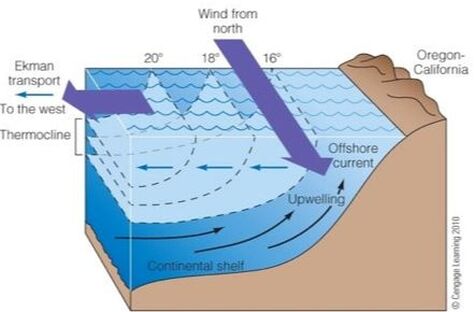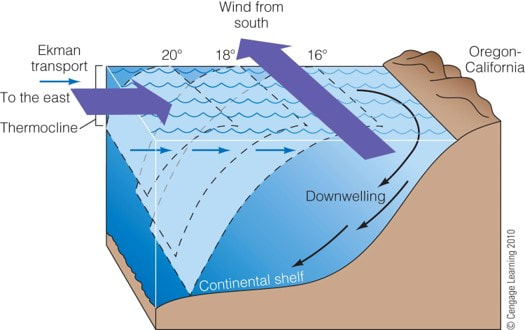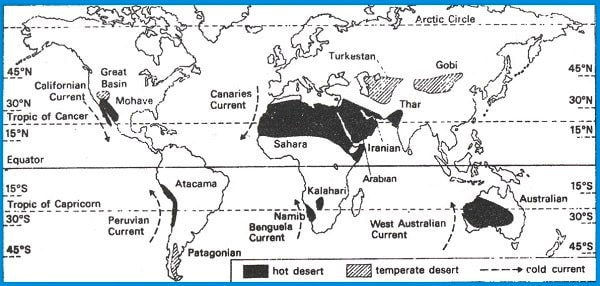3.4 - Vertical Motion
Objectives:
- To know that water can move vertically due to density changes and also due to wind driven currents.
- To understand that the atmosphere and oceans are interlinked and that the properties of the ocean affect the regional climates.
- Be able to correlate the cold surface currents with desert climates.
When the surface water is pushed sideways by winds and density, it must also cause some vertical motion due to geography. Land is a factor. If the wind blows the surface water away from the land, it must get replaced by something, it can't just leave a hole in the ocean. Home experiment: use a ladle from the kitchen and try to dig a hole in the surface of your swimming pool. It can't be done. Water quickly flows in to fill it up. In the ocean, water can be replaced by more surface water from somewhere else, or water that is brought up from below. This is known as upwelling. It is beneficial as this deep water tends to be nutrient-rich from the sediments of marine snow that have settled down there for a long time. Marine life increases.
Upwelling can also occur when ocean currents meet shallow water - the Bermuda seamount is an example. Upwelling water leads to increased numbers of fish, and so sportfishing tournaments look for this.
Downwelling can be caused by water meeting land with nowhere else to go but downwards, or by increasing density (see the next section).
Upwelling can also occur when ocean currents meet shallow water - the Bermuda seamount is an example. Upwelling water leads to increased numbers of fish, and so sportfishing tournaments look for this.
Downwelling can be caused by water meeting land with nowhere else to go but downwards, or by increasing density (see the next section).
|
Upwelling can decrease the temperature of the surface current, which has a marked effect on the local climate. Cold sea surface temperatures suppress atmospheric convection and reduce atmospheric moisture due to reduced evaporation rates. They can also cause fog to form as any moisture condenses over the cold surface. It is not a coincidence that deserts are located where a cold water current flows.
|
Nike Trainers 2 - The Sequel! BBC News 19 June 2019


